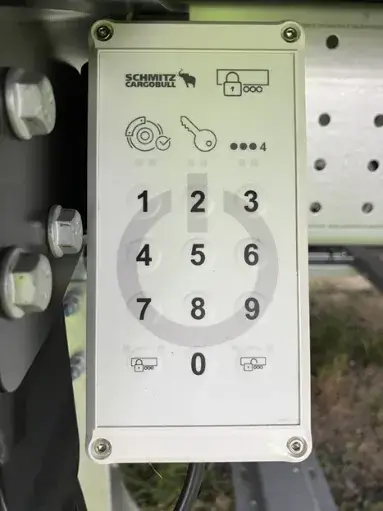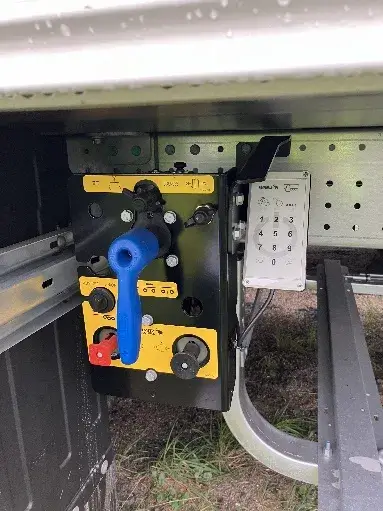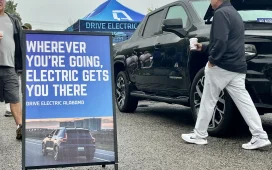IAA Transportation 2024 kicked off with the unveiling of a new electric truck, and much of the buzz throughout the week in Hanover was centred around the latest generation of zero-emission vehicles.
However, amid all the focus on these trucks, one could easily overlook the efforts being made to decarbonise the energy-intensive refrigerated transport sector.
Conventional refrigerated trailers, besides being noisy, are a significant contributor to the emissions of the road transportation industry. In recent years there has nonetheless been notable development made in reefer trailer and refrigeration unit technology, both in terms of sustainability and security.
Among the manufacturers pushing forward this development is Schmitz Cargobull, who showed off a number of exhibits at its IAA Transportation stand, including new all-electric and hybrid refrigeration units, as well as a new reefer trailer.
So to get the inside track on the latest technological enhancements in cold chain transportation, and learn about what the future has in store, we spoke to Norbert Flacke, Cargobull Cool Managing Director, and Dennis Hövelmann, Head of Product Management Schmitz Cargobull Cool Freight.
All-electric refrigeration units
First off, Flacke went into detail on two of the new refrigeration units that Schmitz Cargobull unveiled at IAA Transportation 2024. The two very different models suit different types of operation and are aimed at addressing somewhat disparate market needs.
One unit provides all-electric for those seeking emission-free transportation of refrigerated goods, while the other can run on diesel or electric – offering more flexibility for those not quite ready to dive into fully-electrified road transport.
“At first we designed this type of unit – a complete electric system with a high voltage box, a battery, and an axle with a generator,” said Flacke, referring to the S.CU ep85 cooling unit photographed below.
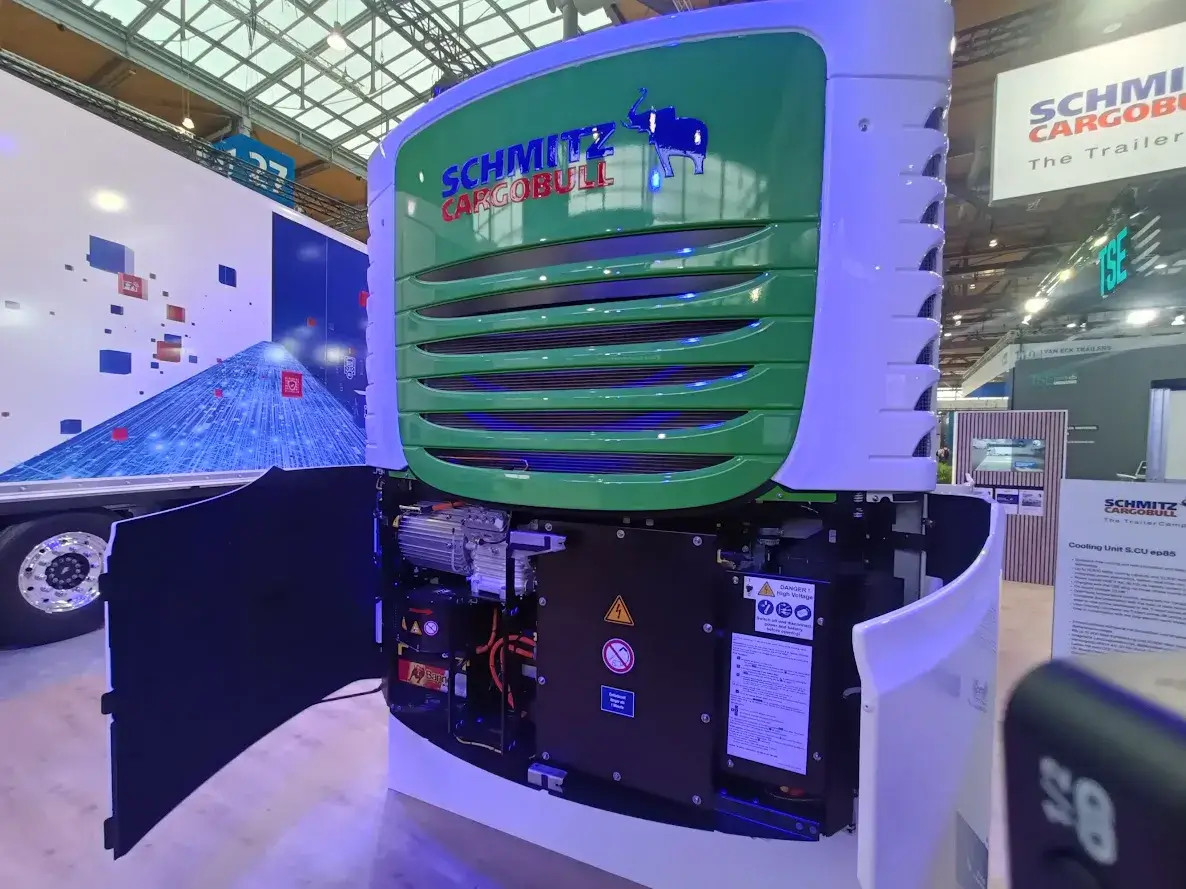
Schmitz Cargobull’s S.CU ep85 cooling unit
Schmitz Cargobull states that this “battery only” version offers savings in weight and cost and is ideal for split transport. The cooling unit provides a cooling capacity of up to 15,800 W and a heating capacity of 10,500 W, generating the same cooling capacity as a diesel-powered refrigeration unit.
Flacke admits that the all-out electric unit is not best served for long-distance transport, but would suit middle-distance operations.
“It’s not an ideal solution for long-distance, but it is good for delivery, because we have 32 kilowatt hours of capacity and we have an axle where you can recuperate energy. This makes it a good solution for middle distance, for maximum 8-10 hour stay, depending on the ambient conditions, in a parking area, or for when a truck is stuck in a traffic jam,” Flacke told Trans.INFO.
The Cargobull Cool Managing Director added that the all-electric solution is also more expensive compared to a diesel unit. Therefore, to address this and offer an alternative solution, he and his colleagues went about developing the trailer photographed below, the S.CU d80 ePTO ready.
Utilising the technology behind ePTO
The S.CU d80 ePTO ready is an example of a refrigeration unit that utilises Electric Power Take-Off (ePTO) technology.
As the European Automobile Manufacturers’ Association (ACEA) explains, ePTO allows vehicles to harness electrical energy from their powertrains and use it for various auxiliary functions. The ACEA believes this innovation is a “key component of the shift towards electric and hybrid vehicles”.
According to Schmitz Cargobull, the S.CU d80 ePTO ready enables 100% electric operation backed up by diesel operation if an electrical energy source is not available. Andreas Schmitz, Chairman of the Board of Schmitz Cargobull AG, says the lower price of the unit, which is thanks to the fact the refrigerated semi-trailer requires neither a high-voltage battery nor an e-axle, helps transport companies to handle the energy transition.
The well-known trailer manufacturer argues that an ePTO interface connecting the cooling unit to an electric tractor unit “provides the most economical means of ensuring emission-free cooling in a refrigerated semi-trailer”.
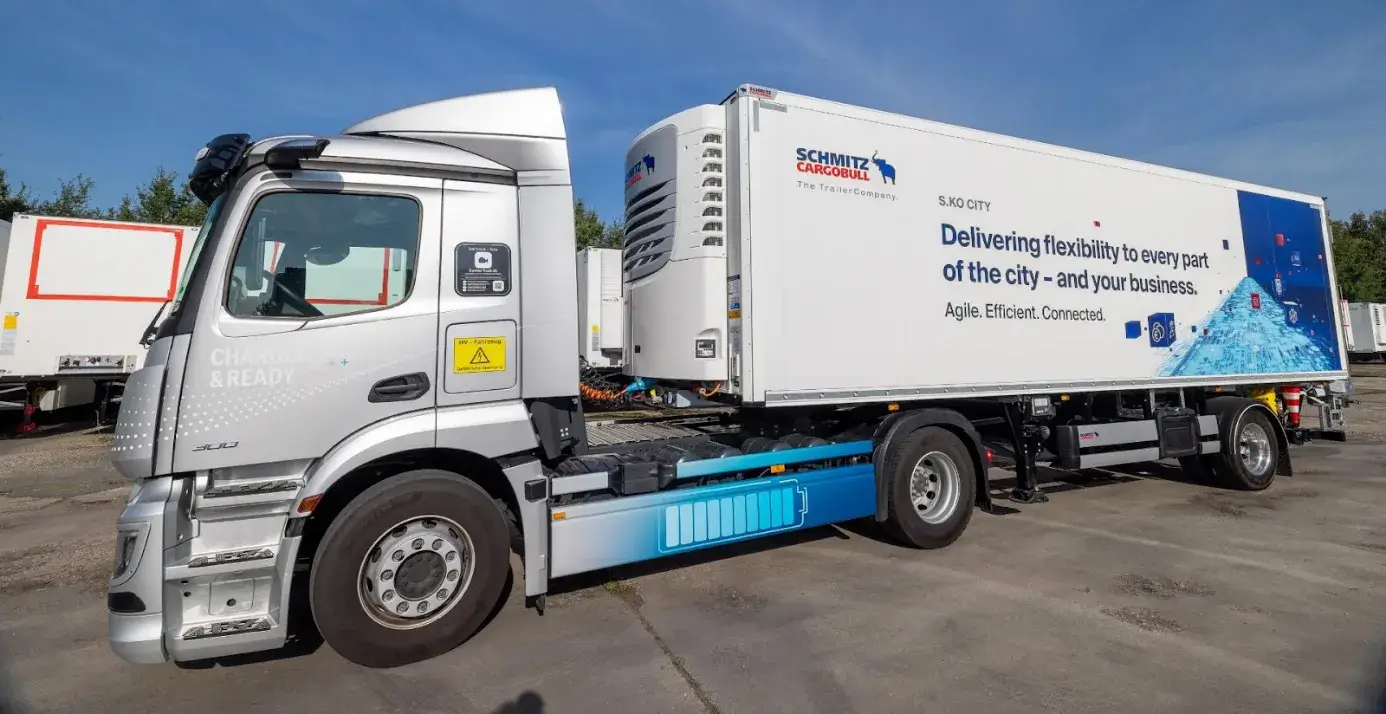
Schmitz Cargobull’s S.CU d80 cooling unit (Photo: Schmitz Cargobull press materials)
Flacke himself reiterated that flexibility and cost are two of the main pluses of the new model:
“This unit can run via a diesel engine or electric energy from an e-truck through ePTO. We think it’s the best transformation unit for this business yet, because you have here a normal diesel engine with a generator, and we have a standard CEE plug, and we have an ePTO interface that means that with an ePTO truck, you can use the high-voltage-Battery from the eTruck for the cooling unit.”
Flacke added:
“If the e-truck doesn’t have enough capacity to get home, then we can cut off the ePTO inlet and the cooling unit can run on the diesel engine. We think it’s a good solution because it’s not as expensive as the S.KOe [Schmitz Cargobull’s fully electric unit].”
The challenges facing designers of modern trailer refrigeration units
Given Flacke’s central role in helping to develop these new refrigeration units, we asked him what the biggest design challenges manufacturers in the sector are facing.
In Flacke’s opinion, it has been a daunting challenge trying to build units that require less refrigeration fluids.
“The biggest problem we have here in the European market is the refrigeration fluid, because it has increased in price significantly,” said Cargobull Cool’s Managing Director.
Flacke added:
“The quotation regulation about refrigeration fluids meant the capacity of the fluids in the market fell and the price went up. So we investigated changing the heat exchanger from a normal one to a micro channel. Thanks to the micro channel, we can reduce the fluid required by one and a half kilograms. By employing the highly efficient heat exchanger we save fuel and can use less refrigerant. Both are good for the cost of operation and the environment.”
Future developments and the need to meet California’s tough regulations
As for how this technology will evolve and develop looking further forward, Flacke told Trans.INFO that “electrification will develop more and more in the future”.
On the regulatory side of things, one possible direction, at least from a European perspective, could be for regulations to follow the lead of those in California.
Indeed, Flacke says that manufacturers have even advocated for regulators in Europe to do just that – provided they wish to toughen the existing regulatory framework on the environmental credentials of trailer refrigeration units.
“The regulation standards in California are higher than the European ones. The European governments are seeking to lower emissions from diesel engines, and they’ve asked us about what can be done. We say that if you need to have stronger emissions regulation, then please do the same as California because otherwise we’d need to have different types of engines, and that would cost a lot of money,” Flacke told Trans.INFO.
On the other hand, Flacke also pointed out some issues with the way emissions are calculated stateside:
“However, the problem in America is that the Americans look at what quality is coming out of the exhaust , but they don’t look at the inlet in the units. For example, it is not important whether it’s 10 litres or 5 litres – in the American area they only look at the exhaust quality. In Europe I think it’s better the way that we look at things. The best way to cut exhaust gases is to reduce fuel consumption. Then you have good quality because not so much comes out of the exhaust system. So that’s the first thing we have to do. Then we have to look for the partial quality of NOx particles and particulate matters (pm) coming out of exhaust,” said Cargobull Cool’s Managing Director.
Reefer trailer development
Besides refrigeration units, manufacturers are also making strides when it comes to the sustainability and security of reefer trailers.
In the case of Schmitz Cargobull, the company’s latest reefer trailer contains the full package of generator, axle, a high voltage battery, and in front, the fully electric cooling unit. The trailer also has some new body parts and components to improve aerodynamics and thus fuel efficiency.
In addition to this, according to Product Manager Dennis Hövelmann, the latest model incorporates design elements that reduce noise among other things:
“The new multifunctional floor is low noise, so you can load and unload early in the morning or late in the evening, even in urban surroundings. Then, perhaps it’s just a small thing, but we’ve a small grill that protects the cooling unit from rubbish or anything else that could be sucked through air circulation. Moreover, we have a double-decker system in place, so you could transport 66 pallets instead of 33. It’s multi-temp too, so you can transport frozen goods at the front and fresh goods at the rear. The multi-temp cooling unit works in combination with a roller shutter option, which provides more flexibility with this cooling unit and reefer trailer as well,” Hövelmann told Trans.INFO.
Hövelmann added that besides sustainability, it was particularly important to meet the market demand for flexibility, which is something Schmitz Cargobull has sought to incorporate into its trailer design.
How are modern trailer manufacturers addressing the demand for better security features?
Another key area that can’t be ignored, particularly during a period in which reported freight thefts have skyrocketed, is cargo security.
So what kind of tech are trailer manufacturers deploying to help hauliers secure their cargo?
One example highlighted by Hövelmann was Schmitz Cargobull’s door locking system, which features on-board security options that can be controlled via the telematics or via the keypad at the front of the trailer.
“You can lock and unlock the doors via our telematics portal, as well as the cooling unit display. You can even lock and unlock it through geofencing. So, when the trailer is entering a specific area, the doors open and you can load and unload. Also, if you don’t trust your driver for whatever reason, you can just lock the trailer. Then when the driver arrives in a specific area, the doors open for unloading and will close again automatically after the truck sets off. You can really pinpoint the area where you’d like the doors to be open, just put the area where you want on a map and customise it,” Hövelmann told Trans.INFO.
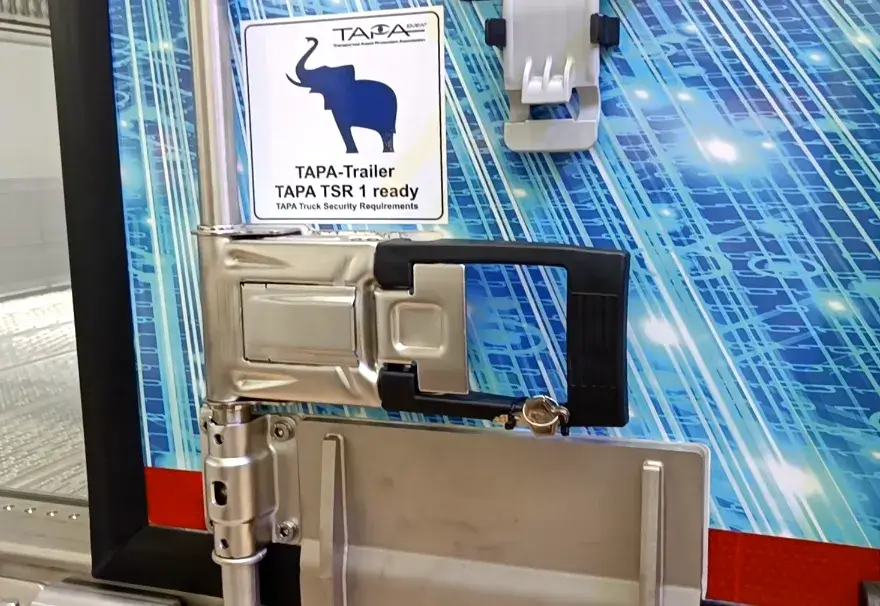
Finally, another feature Hövelmann demonstrated was a keypad locking system that in his opinion, would be particularly useful for companies that lease trailers:
“Behind the axles, next to the lifting and lowering valve there’s a keypad too, which acts as a trailer immobiliser. So, if you are a rental company for example, or if you have a lot of truck trailer interchanges, you could also lock the brakes of the trailer and provide a driver with a specific code to pick up that specific trailer. It could also be that the rental company has the trailer parked somewhere and is locked to prevent its theft. Then, when someone wants to rent it, they simply take the code to unlock the brakes and just drive off with the trailer,” said Hövelmann.
